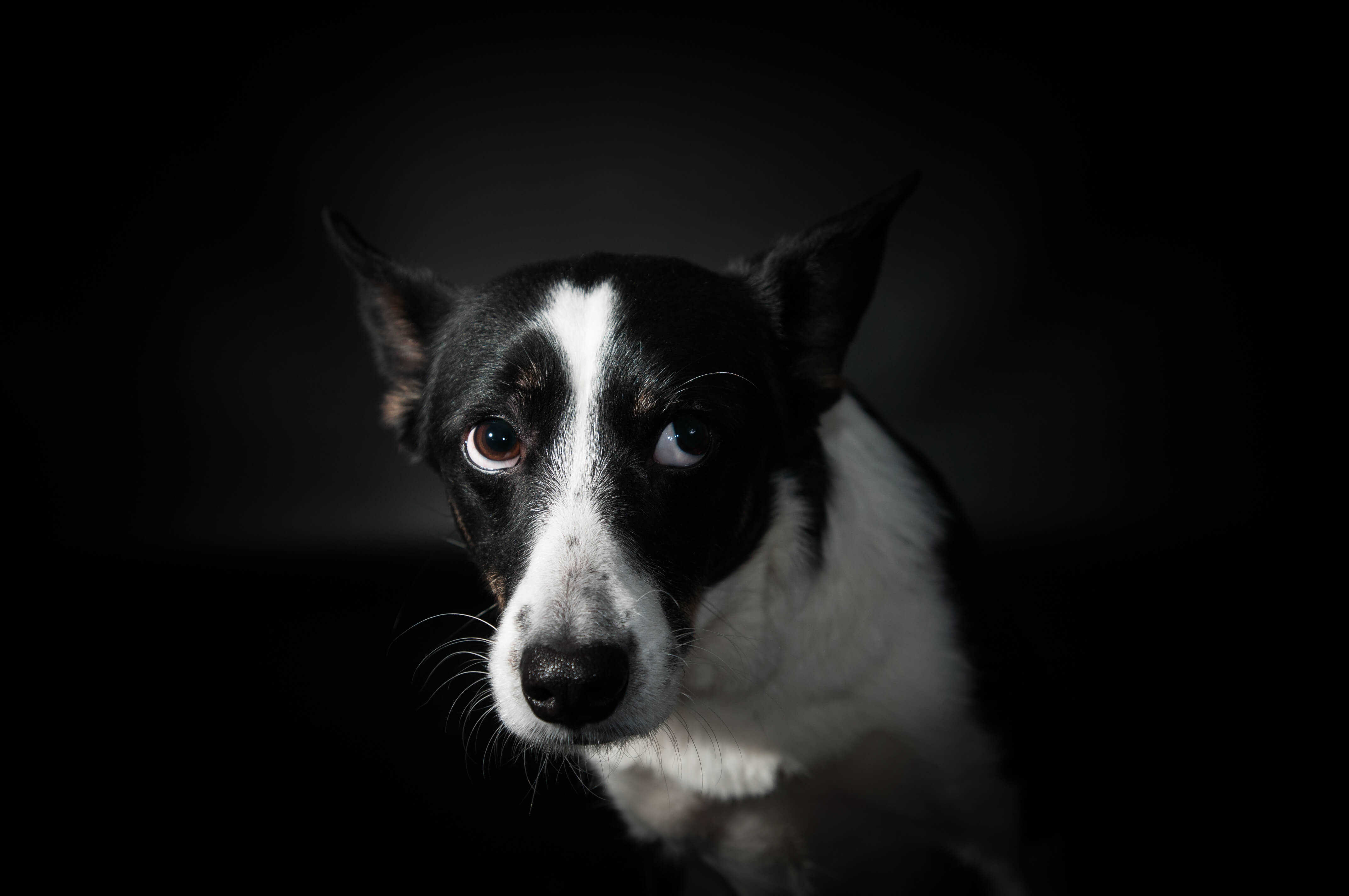'Ignore it, it will go away.' was the advice our vet gave years ago, when we told him our dog was afraid of thunderstorms. We did as was suggested and over time her fears got increasingly worse. Over time she went from panting and pacing to trembling, trying find places to hide, even before a thunderstorm arrived.
Why? because we listened to that poorly given advice. What we should have done is understood that what she needed was to feel safe, to be able to trust that she could come to us for the comfort and compassion she so deserved - she should not have had to face her fears alone.
Thankfully times have changed, dog trainers have realized that we can change how a dog feels about something they are afraid of by helping them feel safe (soft words, gentle strokes, providing them with a 'safe place' - should they choose to use it) and to work to change how they feel by offering them something that is rewarding to them (in many cases - food). We work with terrified dogs, reactive dogs, shy/timid dogs with food (or other rewards) to 'counter condition' - change how they feel about what is worrying them, so why on earth would we not help a dog who, (from our perspective), is just a 'little bit' afraid, assuming (incorrectly) that they will just 'get over it', in an effort to prevent their fears from intensifying?
It should be understood that we can 'reinforce' our dogs fear if we are afraid as well, they will without a doubt pick up on it. We can also intensify their fears by punishing their fearful behavior, (growling, barking, lunging) with reprimands, 'corrections' or other negative interactions with them, causing them to associate what they afraid of with more discomfort or pain.
'Life lessons' - If I had held on to the myth of reinforcing fear - I would never have been able earn my abused fearful dog's trust or my reactive dog the life they deserved to live IF I had refused them comfort and safety and rewards (high value treats) when they were afraid. I would never have been able to help my puppy over his normal apprehensions/fears, if I hadn't let him know 'It's okay!' (a phrase I still use when he looks to me for reassurance)- gave him comfort/security when he came to me for it, and helped him learn with words of gentle encouragement, pets of reassurance and the use of treats to help build his confidence and trust in his world.
We wouldn't ignore a frightened child, we would do anything we could to help them feel less afraid and feel safe, our dogs who are as dependent on us as a child needs and deserves that same caring, compassion and empathy from us.

 www.theacademyofpetcareers.com
www.theacademyofpetcareers.com

 allthedogstraining.com
allthedogstraining.com
Why? because we listened to that poorly given advice. What we should have done is understood that what she needed was to feel safe, to be able to trust that she could come to us for the comfort and compassion she so deserved - she should not have had to face her fears alone.
Thankfully times have changed, dog trainers have realized that we can change how a dog feels about something they are afraid of by helping them feel safe (soft words, gentle strokes, providing them with a 'safe place' - should they choose to use it) and to work to change how they feel by offering them something that is rewarding to them (in many cases - food). We work with terrified dogs, reactive dogs, shy/timid dogs with food (or other rewards) to 'counter condition' - change how they feel about what is worrying them, so why on earth would we not help a dog who, (from our perspective), is just a 'little bit' afraid, assuming (incorrectly) that they will just 'get over it', in an effort to prevent their fears from intensifying?
It should be understood that we can 'reinforce' our dogs fear if we are afraid as well, they will without a doubt pick up on it. We can also intensify their fears by punishing their fearful behavior, (growling, barking, lunging) with reprimands, 'corrections' or other negative interactions with them, causing them to associate what they afraid of with more discomfort or pain.
'Life lessons' - If I had held on to the myth of reinforcing fear - I would never have been able earn my abused fearful dog's trust or my reactive dog the life they deserved to live IF I had refused them comfort and safety and rewards (high value treats) when they were afraid. I would never have been able to help my puppy over his normal apprehensions/fears, if I hadn't let him know 'It's okay!' (a phrase I still use when he looks to me for reassurance)- gave him comfort/security when he came to me for it, and helped him learn with words of gentle encouragement, pets of reassurance and the use of treats to help build his confidence and trust in his world.
We wouldn't ignore a frightened child, we would do anything we could to help them feel less afraid and feel safe, our dogs who are as dependent on us as a child needs and deserves that same caring, compassion and empathy from us.

The Myth of Reinforcing Fear - The Academy of Pet Careers
There is a school of thought in the training world that says you shouldn’t comfort or give treats to a frightened dog because you are reinforcing fear.
 www.theacademyofpetcareers.com
www.theacademyofpetcareers.com

Truth and Myth about Reinforcing Fear and Anxiety
Reinforcing fear through coddling is a myth. Reinforcement refers to increasing the chance of a particular behavior, but fear is an emotion.




